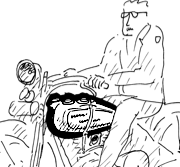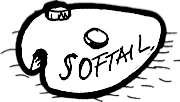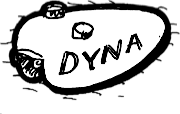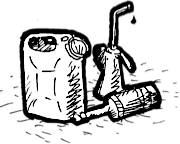Tanks







Related Topics
Gas Tanks for Harley-Davidson motorcycles
Whether you need an original replacement or a custom part, W&W offers a huge selection. Our range of tanks covers all models from the 1916 twins and 1926 singles to the 750s, Knuckleheads, Panheads, Sportsters, Shovels, Evos and Twin Cams. Our tanks are available in two or one pieces, just like the originals. Custom tanks are available with model-specific or universal brackets: Mustang, Teardrop, Peanut, Dirt Tracker, Café Racer, Beefy Body with integrated tanks, from Bates, Cannonball, Cole Foster, Easyriders, Lowbrow, Paughco, Storz, Throttle Addiction... Please take a look and if you have any questions, type the contact details below into your smartphone.
As for those Custom and Aftremarket tanks, can I choose and install whatever I want to?
Almost. There are two conditions. First, the tank must be leakproof. W&W Cycles' suppliers always deliver leakproof tanks. To answer any questions from the authorities in this regard, you can simply have the tank tested and confirmed by an independent company. This could be the painter, but it could also be a company that maintains and repairs radiators or similar. Secondly, the tank must be carefully and well attached to the Harley. The question here is rather how good the welding skills of the person attaching the tank are, and what changes may be made to the Harley frame? Please check with local authorities for clarification.
If I do not ride my Harley for an extended period, is there anything that I should do to the gas tank?
If you leave your Harley with a half-full tank for a long time, you have to expect rust in the tank and the fuel going bad. Not only do the volatile components evaporate over time, but bacteria can also settle and, to make matters worse, form acids. Therefore, there are only two options: either empty the petrol tank completely or fill it to the brim.
Completely emptying the tank is really only an option for mopeds with carburettors. Not only the tank has to be completely empty, but also the fuel lines and the carburettor, and there must be no residue left. Fuel residues can also go bad in the line and in the float chamber. The fuel lines and nozzles of an injection system are not that easy to empty and it doesn't make sense with an injection system anyway.
Therefore, the ultimate recommendation for all tanks is to fill them up to the brim before a long break in driving. The less air remaining in the tank, the better. The alcohol content in the fuel binds the water from normal humidity and thus prevents rust. To ensure that the fuel still atomizes well and ignites after a long break, a stabilizer or gasoline additive is added when refueling. The few kilometers from the gas station to the garage are enough for the fuel with the stabilizer to be distributed throughout the entire fuel system. This way, the tank and fuel are fully protected and you can simply get going again after the break in driving.

Have any questions?
Our service team will be glad to help out: Mondays - Thursdays 08:00-17:00 CET, Fridays 08:00-16:00 CET, Phone: +49 / 931 250 61 16, eMail: service@wwag.com
